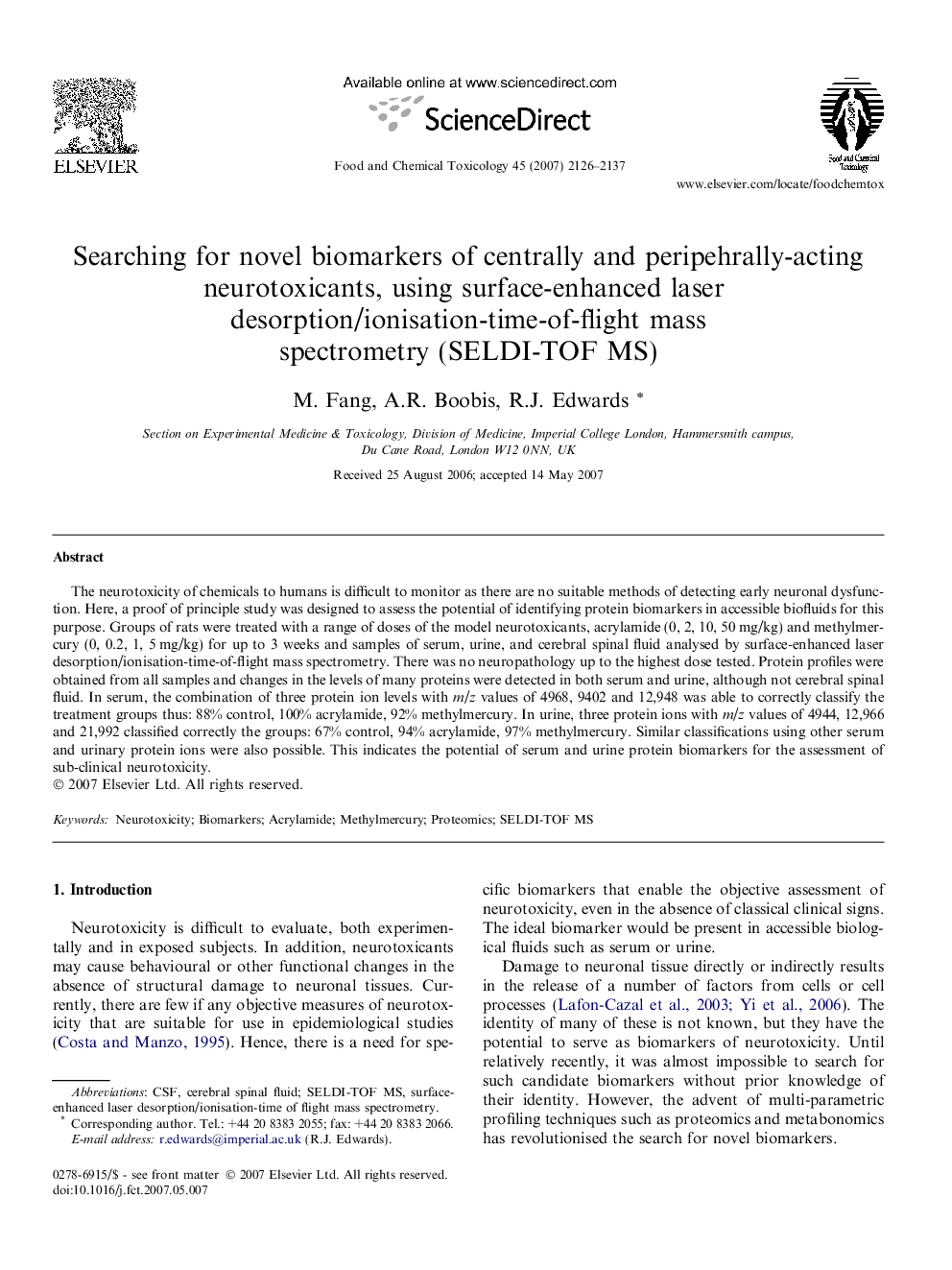| Article ID | Journal | Published Year | Pages | File Type |
|---|---|---|---|---|
| 2587992 | Food and Chemical Toxicology | 2007 | 12 Pages |
The neurotoxicity of chemicals to humans is difficult to monitor as there are no suitable methods of detecting early neuronal dysfunction. Here, a proof of principle study was designed to assess the potential of identifying protein biomarkers in accessible biofluids for this purpose. Groups of rats were treated with a range of doses of the model neurotoxicants, acrylamide (0, 2, 10, 50 mg/kg) and methylmercury (0, 0.2, 1, 5 mg/kg) for up to 3 weeks and samples of serum, urine, and cerebral spinal fluid analysed by surface-enhanced laser desorption/ionisation-time-of-flight mass spectrometry. There was no neuropathology up to the highest dose tested. Protein profiles were obtained from all samples and changes in the levels of many proteins were detected in both serum and urine, although not cerebral spinal fluid. In serum, the combination of three protein ion levels with m/z values of 4968, 9402 and 12,948 was able to correctly classify the treatment groups thus: 88% control, 100% acrylamide, 92% methylmercury. In urine, three protein ions with m/z values of 4944, 12,966 and 21,992 classified correctly the groups: 67% control, 94% acrylamide, 97% methylmercury. Similar classifications using other serum and urinary protein ions were also possible. This indicates the potential of serum and urine protein biomarkers for the assessment of sub-clinical neurotoxicity.
